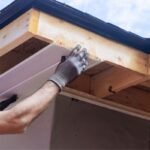Tree Trimming Advice From Tree Trimming Services Professionals
You may not need to hire tree trimming services if you have healthy trees or basic knowledge of tree trimming. Knowing the basics of tree trimming and pruning will allow you to do some work yourself. The pros can handle the more difficult tasks. It’s easy to maintain a tree’s appearance and health with the right knowledge. It is possible to avoid most common issues by doing regular maintenance. There are many ways to trim trees, but not all of them should be confusing. The basics are all you need to know. If you have a large property or don’t feel like doing any yardwork, you can hire a professional tree trimming service such as Evergreen Tree Services.
Pruning or trimming your trees is a smart thing to do
Tree trimming serves three primary purposes:
Safety – Trees that have fallen off or died are a safety hazard. These branches can fall at anytime and should be removed quickly. You don’t want your tree to take on an unnatural appearance, but dying branches should be removed before they cause danger. This is also true if tree branches are growing near utility lines. You should contact your utility company in such cases to resolve the matter. One in four power outages are caused by tree limbs or branches. When branches are too close, you shouldn’t take responsibility for such tasks. You risk causing disruptions to power lines and causing injury to yourself and others. You can trim the tree so that it doesn’t grow too close to your house, but you should always contact professionals.
2 Health – Often, trimming a tree can save it from becoming infected. It is easy to prune off any limbs or branches that are damaged. Trees can benefit from thinning their crowns. This can increase airflow and can make them more resilient. It is also a good idea to trim any branches that are in conflict with each other. These can cause them to fall.
HTML3_ Aesthetics You can control the appearance and shape of a tree by pruning it. This type of trimming is not recommended as it can lead to serious injury to the tree.
General Tips for Trimming Trees
Trimming a tree in the dormant season is the best time. Only exceptions to this rule include pine trees which can be trimmed anytime, as well as any tree that is in danger.
Be mindful of the size of the branch you are removing. If the diameter of a branch is greater than 10 centimeters, it should be left to the professionals. You should not attempt to do it yourself as it can pose a danger immediately.
Trim branches that are:
- Neat angles
- V-shaped angles
- Weak
Keep any strong branches with u-shaped angles. Your lateral branches should not exceed 1/2 to 3/4 of the stem’s diameter. The finished job should have a ratio of tree height to living crown of 2/3
Prune branches when they’re young. This makes pruning much easier and lowers the risk of scarring. Do not remove the branch collar, and do not leave any large stubs behind.
Tree Pruning Tips
- A Tree Crown is to be trimmed
- Particularly for younger trees, keep the spacing between lateral branches even.
- Prune branches that are in conflict with each other or cross branches.
- Do not take out more than 1/4 of the living crown.
How to raise a tree crown
- It can be helpful to raise the crown of a Tree so that pedestrians have clearance.
- Live branches should be kept at least 2/3 the height of the tree.
- Do not remove branches that are near the bottom of the tree. This could reduce the tree’s ability for growth.
Reducing a Tree Crown
- If more than half the foliage needs to be removed from a branch, you can remove it all.
- Removing a tree crown should only be done when absolutely necessary.
- Reduce any lateral branches to 1/3 of the stem’s diameter.
Tree Trimming Techniques
- These are some of the best tree trimming methods.
- Look for the branch collar. This is located at base of branch.
- Look out for the branchridge. This is located on top of the branch angle.
- Take out the branch bar-ridge.
- Turn your cut towards the stem.
- Do not cut the branch collar.
This technique should be used both for live and dead branches.
To make longer stems, you can use the three-cut method:
- A notch should be made on the stem’s side, away from the branch.
- A second cut should be made above the branch ridge, inside the branch crotch.
- Third cut parallel to branch bark ridge through stem. This will remove any stub.






